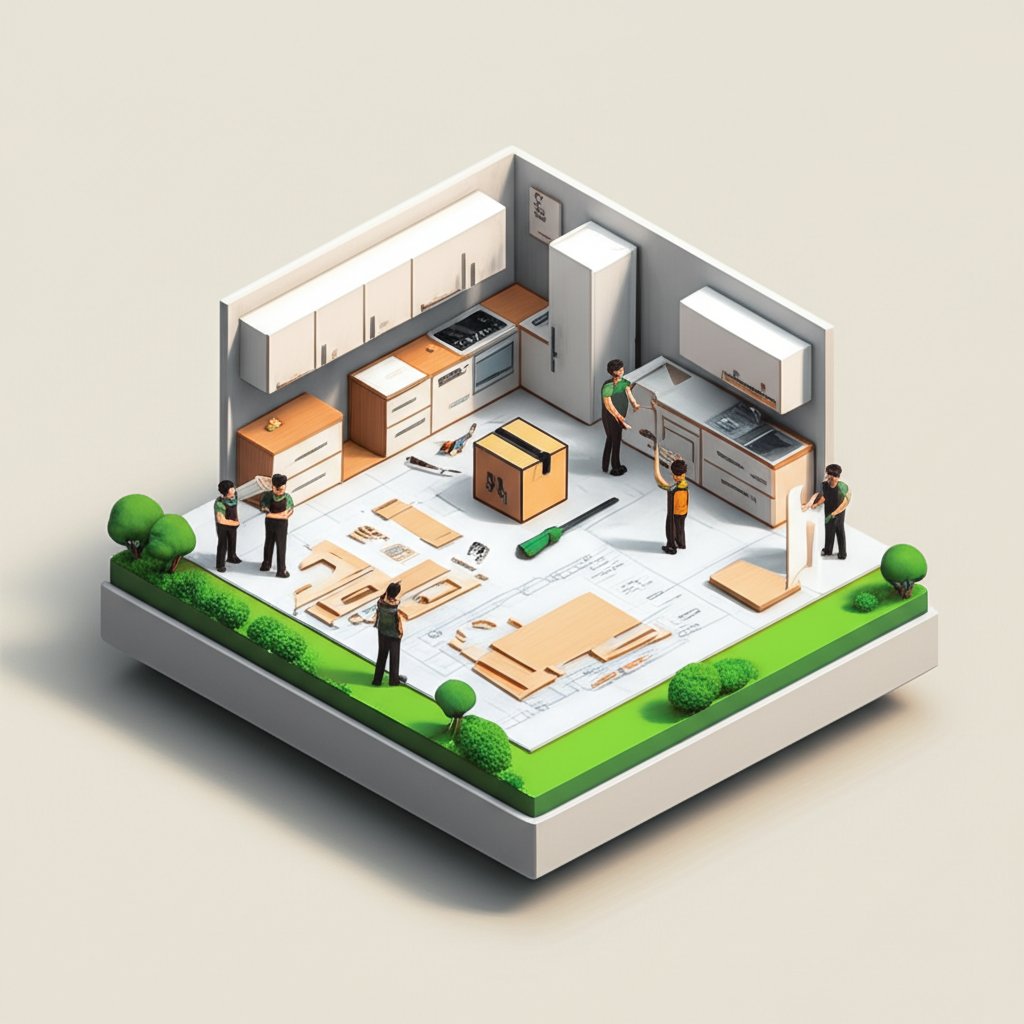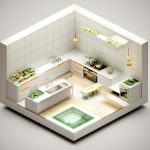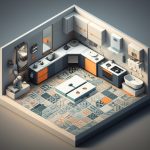Dreaming of a kitchen upgrade but dreading the hefty price tag and disruptive installation? The world of best rta kitchen cabinets offers a sweet spot: impressive style, solid construction, and significant savings—if you know where to look. Get it wrong, and you’re stuck with flimsy materials and a DIY nightmare.
At a glance:
- Quickly identify the RTA cabinet qualities that truly matter for longevity and your lifestyle.
- Discover how to navigate the RTA cabinet market to find hidden gems.
- Learn practical steps for ensuring a smooth assembly experience.
- Understand common misconceptions about RTA cabinets.
- Pinpoint the RTA cabinet styles that offer the best blend of aesthetics and value.
Decoding RTA Cabinet Quality: Beyond the Hype
Not all ready-to-assemble (RTA) cabinets are created equal. The term “RTA” simply refers to the assembly method, not the inherent quality. So, how do you sift through the options to find the best rta kitchen cabinets that will last? Here’s a breakdown of key factors:
- Material Matters: Solid wood and plywood are your best friends. Avoid particle board or MDF (medium-density fiberboard) for critical structural components like cabinet boxes. Solid wood frames paired with plywood panels offer a good balance of durability and cost.
- Construction Counts: Look for dovetail joinery on drawers, which indicates superior strength. Check how the cabinet boxes are assembled – glued and screwed construction is preferable to staples alone. A sturdy build translates to cabinets that can withstand daily wear and tear.
- Hardware is Highly Important: Pay close attention to hinges and drawer slides. Soft-close mechanisms are a worthwhile upgrade for both convenience and longevity; they prevent slamming and reduce stress on the cabinet frame. High-quality hardware ensures smooth operation and prevents premature failure.
Example: Imagine two shaker-style cabinets, both white. One is particle board with stapled construction and basic hinges; the other is solid wood frame and plywood panels, dovetail drawers, and soft-close hardware. The second option clearly offers better value and long-term performance, even if the initial price difference is noticeable.
Spotting the Best RTA Cabinet Styles for Style and Value
RTA cabinets come in a wide range of styles, from traditional to contemporary. However, some styles offer better value than others, striking a balance between aesthetics, cost, and ease of assembly.
- Shaker Style: A timeless classic, shaker cabinets feature clean lines and a simple, recessed panel. This versatile style works well in various kitchen decors and tends to be more affordable than ornate designs.
- Flat-Panel (Slab) Style: This minimalist style is characterized by its smooth, unadorned doors. Flat-panel cabinets are a great option for modern kitchens and are often easier to assemble than styles with intricate details.
- Raised-Panel Style: While visually appealing, raised-panel cabinets can be more expensive due to the added detail. If you’re on a budget, consider using raised-panel cabinets sparingly as accent pieces.
Case Snippet: A homeowner renovating a small kitchen opted for white shaker-style RTA cabinets. They strategically added a few glass-front cabinets with subtle detailing to create visual interest without breaking the bank. The shaker style provided a clean, classic look that complemented the limited space.
The RTA Assembly Playbook: Avoiding Common Pitfalls
Assembling RTA cabinets can be a rewarding DIY project, but it’s essential to approach it strategically to avoid frustration and ensure a professional-looking result.
- Inventory and Inspect: Before you start, carefully unpack all the components and compare them to the parts list. Check for any damage or missing pieces; contact the manufacturer immediately if you find any issues.
- Read the Instructions: Thoroughly review the assembly instructions before you pick up a screwdriver. Familiarize yourself with the steps involved and identify any potential challenges. Some manufacturers also offer video tutorials, which can be incredibly helpful.
- Gather Your Tools: Make sure you have all the necessary tools on hand, including a drill, screwdriver, level, measuring tape, and rubber mallet. Using the right tools will make the assembly process much smoother and prevent damage to the cabinets.
- Work in a Clear Space: Dedicate a clean, well-lit area for assembly. This will prevent you from losing parts and ensure you have enough room to maneuver. Cover the floor with a drop cloth to protect it from scratches.
- Take Your Time: Don’t rush the assembly process. Work methodically, following the instructions carefully. Double-check your work at each step to ensure everything is aligned correctly.
- Ask for Help: If you’re unsure about any aspect of the assembly process, don’t hesitate to ask for help. A friend or family member can provide an extra set of hands and prevent costly mistakes.
Practical Tip: Invest in a good quality drill with adjustable torque settings. Overtightening screws can strip the wood and damage the cabinets.
RTA Cabinet Reality Check: Common Myths Debunked
There are a few common misconceptions about RTA cabinets that can deter potential buyers. Let’s set the record straight:
- Myth: RTA cabinets are always low quality.
- Reality: While some RTA cabinets are made with inferior materials, many manufacturers offer high-quality options with solid wood construction, durable finishes, and premium hardware.
- Myth: RTA cabinets are difficult to assemble.
- Reality: Modern RTA cabinets are designed for relatively easy assembly, with clear instructions and pre-drilled holes. While some DIY experience is helpful, most homeowners can assemble RTA cabinets with patience and attention to detail.
- Myth: RTA cabinets look cheap.
- Reality: With careful selection, you can find RTA cabinets that rival the look of custom cabinetry. Choose styles and finishes that complement your kitchen decor and pay attention to details like hardware and edge banding.
- Myth: They’re not durable like pre-assembled
- Reality: A well-built RTA cabinet with quality materials can absolutely last. Look for plywood boxes, solid wood face frames, and good joinery. The assembly itself, if done correctly, doesn’t inherently weaken the structure.
Beyond the Basics: Finding the Best RTA Kitchen Cabinets for Your Needs
Ultimately, the “best” RTA kitchen cabinets are the ones that best meet your individual needs and preferences. Here’s a decision roadmap:
- Define Your Budget: Determine how much you’re willing to spend on cabinets. This will help you narrow down your options and avoid overspending.
- Assess Your Kitchen Layout: Measure your kitchen space carefully and create a detailed floor plan. This will help you determine the size and quantity of cabinets you need.
- Choose a Style: Select a cabinet style that complements your kitchen decor and reflects your personal taste. Consider factors like color, door style, and hardware.
- Prioritize Quality: Focus on finding cabinets made with high-quality materials and sturdy construction. Don’t sacrifice quality for a lower price; it will cost you more in the long run.
- Read Reviews: Research different RTA cabinet brands and read online reviews. Pay attention to what other customers are saying about the quality, ease of assembly, and customer service.
- Order Samples: If possible, order samples of the cabinets you’re considering. This will allow you to see the quality and finish firsthand before making a final decision.
To further enhance your understanding and explore the best options on the market, Discover Quality RTA Kitchen Cabinets and delve deeper into the world of ready-to-assemble cabinetry.
Quick Answers: Your RTA Cabinet Questions Answered
- Q: How much can I save with RTA cabinets?
- A: RTA cabinets can save you 30-50% compared to pre-assembled cabinets, primarily due to lower labor costs.
- Q: What tools do I really need for assembly?
- A: At minimum: a drill/driver, screwdriver set (Phillips and flathead), a level, a measuring tape, and a rubber mallet. A power screwdriver is highly recommended.
- Q: What if I mess up the assembly?
- A: Most manufacturers offer replacement parts. Contact their customer service department for assistance. Take photos of the problem area to help them diagnose the issue.
- Q: How do I ensure cabinets are level during installment?
- A: Use shims! These thin pieces of wood or plastic can be inserted under the cabinets to level them on uneven floors. A laser level can also be invaluable.
Your RTA Kitchen Cabinet Action Plan: Start Saving Now
Ready to transform your kitchen with the best rta kitchen cabinets?
- Budget: Set a realistic budget, factoring in materials, tools, and potential for professional assistance (if needed).
- Research: Dedicate time to researching brands, reading reviews, and comparing cabinet specifications.
- Plan: Create a detailed kitchen layout and cabinet plan, taking accurate measurements.
- Sample: Order samples to assess quality and finish options.
- Assemble: Follow the instructions carefully, work methodically, and don’t hesitate to ask for help.
- Enjoy: Step back and admire your newly renovated kitchen, knowing you saved money without sacrificing style or quality.

- Backsplash Colors for White Cabinets: Find Your Perfect Match - November 19, 2025
- Backsplash Ideas for White Cabinets: Find Your Perfect Style - November 18, 2025
- White Tile Backsplash Kitchen: A Classic and Clean Design - November 17, 2025










